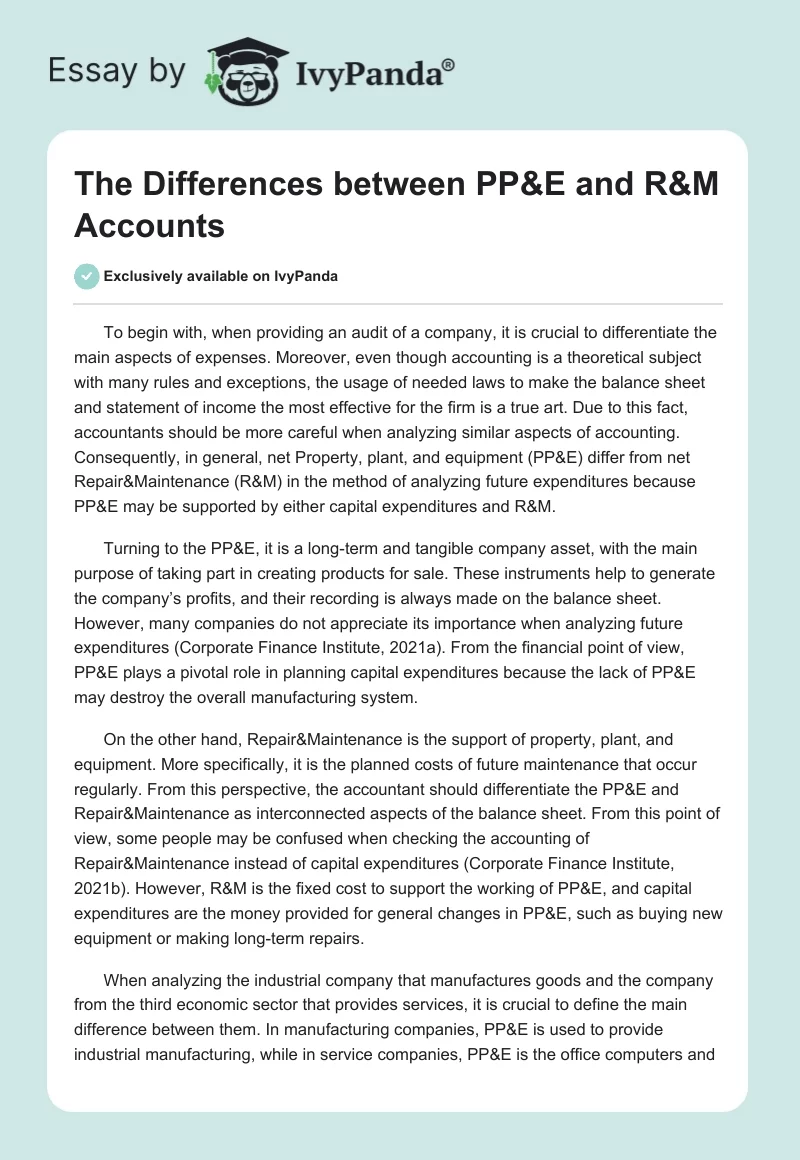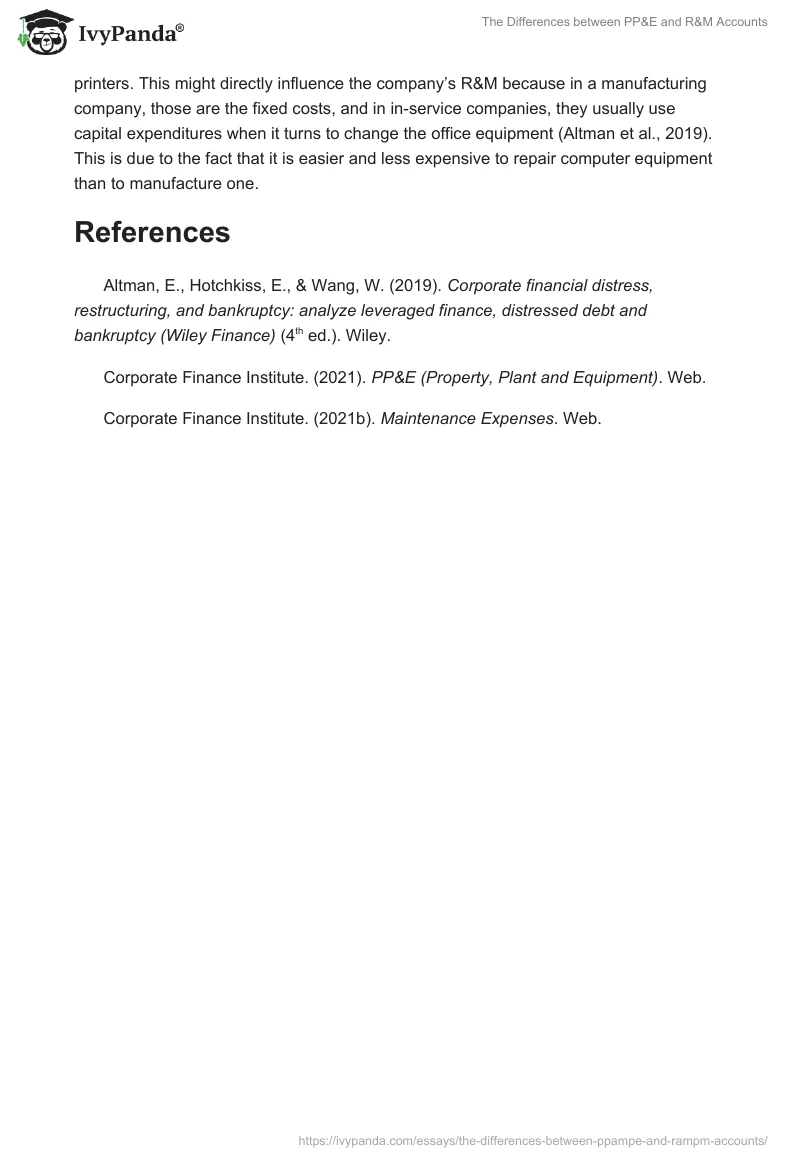To begin with, when providing an audit of a company, it is crucial to differentiate the main aspects of expenses. Moreover, even though accounting is a theoretical subject with many rules and exceptions, the usage of needed laws to make the balance sheet and statement of income the most effective for the firm is a true art. Due to this fact, accountants should be more careful when analyzing similar aspects of accounting. Consequently, in general, net Property, plant, and equipment (PP&E) differ from net Repair&Maintenance (R&M) in the method of analyzing future expenditures because PP&E may be supported by either capital expenditures and R&M.
Turning to the PP&E, it is a long-term and tangible company asset, with the main purpose of taking part in creating products for sale. These instruments help to generate the company’s profits, and their recording is always made on the balance sheet. However, many companies do not appreciate its importance when analyzing future expenditures (Corporate Finance Institute, 2021a). From the financial point of view, PP&E plays a pivotal role in planning capital expenditures because the lack of PP&E may destroy the overall manufacturing system.
On the other hand, Repair&Maintenance is the support of property, plant, and equipment. More specifically, it is the planned costs of future maintenance that occur regularly. From this perspective, the accountant should differentiate the PP&E and Repair&Maintenance as interconnected aspects of the balance sheet. From this point of view, some people may be confused when checking the accounting of Repair&Maintenance instead of capital expenditures (Corporate Finance Institute, 2021b). However, R&M is the fixed cost to support the working of PP&E, and capital expenditures are the money provided for general changes in PP&E, such as buying new equipment or making long-term repairs.
When analyzing the industrial company that manufactures goods and the company from the third economic sector that provides services, it is crucial to define the main difference between them. In manufacturing companies, PP&E is used to provide industrial manufacturing, while in service companies, PP&E is the office computers and printers. This might directly influence the company’s R&M because in a manufacturing company, those are the fixed costs, and in in-service companies, they usually use capital expenditures when it turns to change the office equipment (Altman et al., 2019). This is due to the fact that it is easier and less expensive to repair computer equipment than to manufacture one.
References
Altman, E., Hotchkiss, E., & Wang, W. (2019). Corporate financial distress, restructuring, and bankruptcy: analyze leveraged finance, distressed debt and bankruptcy (Wiley Finance) (4th ed.). Wiley.
Corporate Finance Institute. (2021). PP&E (Property, Plant and Equipment). Web.
Corporate Finance Institute. (2021b). Maintenance Expenses. Web.


